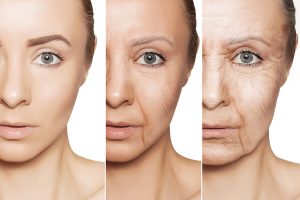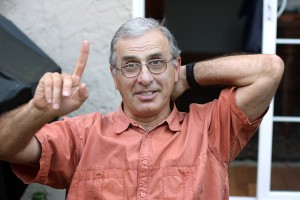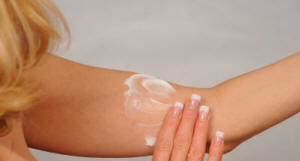Some people look 10 years older than their stated age, and we often wonder: what causes premature aging? Accelerated or premature aging can have a multitude of underlying causes. I will list a few here:
1. Weakening hormones
Men go through andropause at around the age of 60 to 65 and women go through menopause around the age of 55 to 65. In both males and females it is the sex hormones that are missing around that age. If hormones replacement follows fairly quickly with bioidentical hormones, this will not affect the visual appearance that much. In contrast, if bioidentical hormones are not the therapeutic choice for hormone replacement, but synthetic ones, the hormones are not in balance, as synthetic hormones do not restore the hormonal balance. Nothing is gained, as the person will still age prematurely.
Synthetic versus bioidentical hormone replacement
In addition the synthetic hormones will cause heart attacks, strokes, clots, and cancer. Prescriptions for synthetic hormones are often the cause that the aging patient population gets these serious complications. Frequently physicians insist on using synthetic hormones from a “reputable” drug company to replace missing hormones. The reason this does not work is that a male has testosterone receptors. They need to be stimulated by bioidentical testosterone to restore all of his missing functions. Also, the same is true in menopausal females who need stimulation of their estrogen receptors and progesterone receptors. Consequently, only bioidentical hormones will return a postmenopausal woman back to normal. There is a perfect fit between the bioidentical replacement hormones and her hormone receptors. Using synthetic hormones is like trying to unlock a door with a key that does not have a perfect fit: you damage the lock!
2. Missing human growth hormone (HGH) and thyroid hormones
These hormones have a special place in aging.
Human growth hormone deficiency
First, HGH production is running out in many people at age 60. A person with HGH deficiency will have lower muscle mass and strength. Other symptoms are dry and thin skin, particularly at the back of the hands. Men are balding, and they loose interest in sex. There are difficulties concentrating and they may have “senior moments”, which are memory lapses. Often they are prone to depression and anxiety. A blood test will frequently show elevated triglycerides. A blood test (IGF-1) and a urine test exist which make it possible to look for HGH metabolites to assess whether a 40, 50 or 60 year-old person is producing enough HGH. Many may need replacement of HGH. This is administered by injection through a tiny needle into the skin, similar to a diabetic injecting insulin. This will bring back what was missing due to HGH deficiency.
Thyroid hormone deficiency
Thyroid hormones (T3 and T4) are other important factors that could make you look older prematurely. Your hair is getting thinner; your skin turns dry and pale. The nails may be getting brittle. When the outside half of the eyebrows is very thin or missing, this can be a sign of hypothyroidism. In a similar vein the skin in the face may be puffed up due to swelling of the layers under the skin (myxedema). It is important to diagnose hypothyroidism, which is common in the aging population. The physician needs to order a blood tests (TSH, T3 and T4). If TSH is above the upper limit, your physician needs to replace both T3 and T4 by tablets (I prefer Armour as the T3 and T4 is balanced).
3. Smoking
The lining of the airways absorb cigarette smoke. The chemicals circulate around in the blood and lead to aging of the skin. Chronic cigarette smoke exposure also melts away the subcutaneous tissue. The end result is a haggard look. The natural glow disappears from the skin and because of carbon monoxide binding to hemoglobin the skin color looks more greyish. In addition the blood vessels are narrowing or clogging. This means that the body cannot absorb nutrients as well, and cells are starving. There is only one remedy for this: quit smoking!
4. Overexposure to ultraviolet light
The radiation of UV light can penetrate deep into and under the skin. This makes the subcutaneous fat melt away. The largest UV exposure is in the facial area. As a result we see aging there. The end result is a sagging appearance of the face. This link has an image of a woman before and after a non-surgical facelift with stem cells and fatty tissue: Stem Cell Treatments That Are Currently Available – Medical Articles by Dr. Ray
In a surgical procedure the physician harvests mesenchymal stem cells from fatty tissue by liposuction. A cell separator separates the mesenchymal stem cells, the connective tissue and the fat cells. The connective tissue is discarded. Mesenchymal stem cells and fat cells are mixed and injected into the thinned subcutaneous fatty tissue until the person’s younger facial contour is back to normal. Typically this will last for 10 years or more.
5. Drugs and alcohol abuse
Both can lead to malnutrition with weight loss and loss of subcutaneous fatty tissue, which causes sagging breasts in women. In men “beer tits” are common. The reason for this is estrogen accumulation, as alcohol interferes with the elimination of estrogen in the liver. Alcohol is a general cell poison. It causes all of the cells to age prematurely. The more alcohol you drink, the faster you age. The skin develops wrinkles, loss of elasticity and collagen, redness and puffiness. In other words chronic alcohol abuse ages you prematurely. The only remedy for this is to quit drinking. Some of your skin vitality may come back. Our body has an amazing capability to heal itself!
6. Medical illnesses
Many medical illnesses like diabetes, mental illness (depression and schizophrenia), multiple sclerosis, inflammatory bowel disease; cancer and others make you look a lot older very fast.
I will briefly explain the reasons for this.
-
Diabetes
With diabetes type 2 the pancreas releases too much insulin after a meal with starches and sugar; think about a sweet muffin or a toast with jam. The extra insulin causes inflammation. This stimulates enzymes that break down elastin and collagen, leading to wrinkles and sagging skin.
-
Mental illness like depression and schizophrenia
We know from studies that depression leads to shortening of telomeres. This in turn causes cell death in the most rapidly dividing cells like in the skin and hair follicles. The end result is prematurely aged hair and skin. Schizophrenia also leads to premature shortening of the telomeres, which causes premature aging, mitochondrial dysfunction, inflammation and oxidative stress. The end result is that the person looks older than what their chronological age is.
-
Multiple sclerosis
It is sometimes difficult to discern in patients with MS what is normal aging and what is aging from the disease. This link gives some background on this. Many MS patients are anxious, and anxiety and stress by itself also leads to premature aging.
-
Inflammatory bowel disease
The chronic inflammation of either ulcerative colitis or Crohn’s disease can lead to premature aging. High doses of vitamin D3 and molecularly distilled fish oil can be useful to help treat the inflammation. Probiotics are also important to restore the bowel flora.
-
Cancer
Cancer leads to cachexia (excessive weight loss). There is also excessive inflammation, which leads to accelerated aging. The inflammation causes increased oxidative stress. This leads to tissue damage and DNA damage, which makes all cells more vulnerable to develop other cancers. Oxidative stress can substantially accelerate telomere shortening. As a result skin can become saggy, wrinkles develop and the person looks prematurely aged.
7. A chronic lack of physical activity
People who never exercise tend to get overweight and eventually obese. This leads to premature aging. Exercise would elongate telomeres, but inactivity shortens them. Obesity leads to increased oxidative stress and to DNA damage. Obesity also shortens telomeres. All of this leads to premature aging.
Conclusion
These are only a few examples of causes of accelerated aging. The key is to stick to a healthy, balanced diet (like the Mediterranean diet) and exercise regularly. Stop smoking (if you do), don’t take street drugs, and make sure you get enough sleep. Getting enough sleep helps your hormones regenerate overnight. The sympathetic overdrive from your daily activities is counterbalanced by the parasympathetic activities during sleep that causes relaxation. For hormone replacement you may have to see an anti-aging physician, a naturopath or integrative medicine physician. This may be your only chance to address any hormonal deficiencies. Conventional medicine does a very poor job of HRT (hormone replacement therapy) with synthetic hormones. Conventional practitioners want to treat you with synthetic hormones that will make you sick. Hormones for replacement have to be bioidentical! This way you will live 10 to 15 years longer, look younger and stay healthy.









